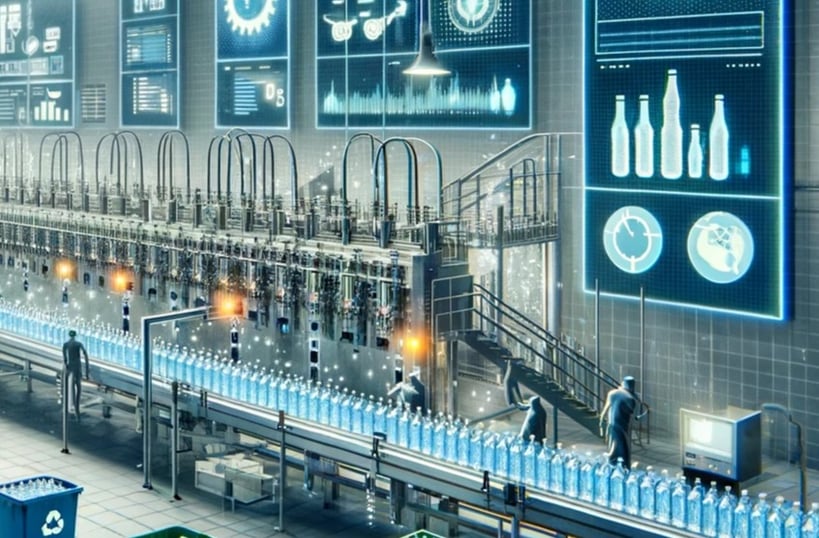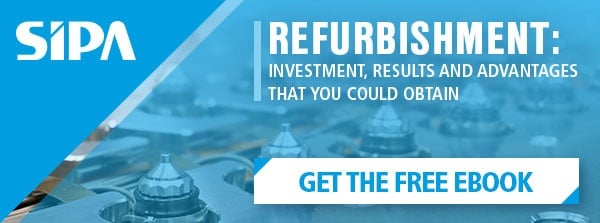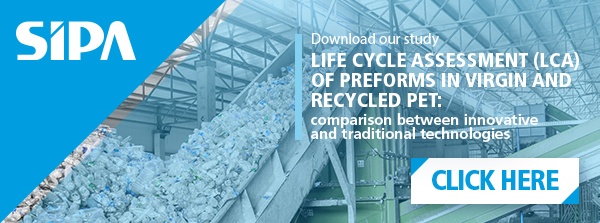
Maximizing the productivity of a bottling line is a constant challenge for managers and entrepreneurs operating in this industrial sector.
An effective strategy is not only about optimizing daily operations but also about extending the lifecycle of the plant itself.
Such an approach creates the conditions for a long-term competitive advantage, as well as being able to achieve higher production levels without forgetting sustainability goals.
The factors that affect the production and life cycle of a bottling plant
Let's take a closer look at these aspects and the key elements to consider when trying to maximize the efficiency and lifespan of an industrial bottling plant.
A crucial aspect in this context is the adoption of cutting-edge technologies such as the integration of automated systems, advanced sensors and data analysis tools, which can lead to a significant increase in operational efficiency.
These tools allow technical staff to monitor the operation of the plant in real time and to detect and resolve any problems in a timely manner. This responsiveness minimizes unplanned downtime to the benefit of production.
The use of the most modern technologies also goes hand in hand with the search for constant optimization of production processes. Automation and advanced data analytics allow you to identify and correct inefficiencies, reducing costs and improving the quality of the final product.
This approach not only increases competitiveness in the market, but also contributes to more efficient resource management.
In addition, the adoption of state-of-the-art technologies can have a positive impact throughout the lifecycle of the plant. Predictive maintenance helps prevent costly breakdowns and extend plant life by optimizing the allocation of financial and material resources.

Proper training
Another important aspect to keep in mind is the need to invest in the continuous training of company staff. Ensuring that operators are properly skilled for the use of new technologies and are up to date with best practices is a key element in maximizing overall efficiency.
Continuous training plays an increasing role in reducing errors and optimizing plant utilization, especially for those who have no prior experience with similar equipment. Enabling employees to acquire skills and knowledge that are constantly updated not only increases their confidence in working with new technologies, but also promotes greater safety in the workplace and helps to avoid potential failures caused by human error.
Finally, a well-trained workforce can more quickly identify and resolve unexpected issues that may arise during operations, ensuring greater consistency of operations and less impact on plant productivity.
Advanced data management
Another crucial aspect concerns data management, which is an increasingly fundamental factor in the evolution of operational efficiency. Data analysis, among its various purposes, includes the ability to identify trends and areas where significant improvements can be made.
The use of business intelligence systems and advanced analytics enables managers to take strategic decisions on how to optimize processes and maximize plant productivity. Data analysis provides a clear view of plant performance, allowing you to proactively identify any inefficiencies and take corrective action.
Sustainability
Last but not least, it is good to consider all aspects related to sustainability. The production of sustainable packaging is a growing priority for many companies. Reducing waste and optimizing resource use are essential to maximize productivity in a sustainable way.
This includes the adoption of recyclable or recycled materials and the implementation of eco-friendly processes which, among other things, help to improve the company's image and meet consumer needs.
These efforts not only reduce the overall environmental impact of manufacturing activities, but can also translate into competitive advantages in the market, as consumers become increasingly attentive to the sustainability of the products they buy.
Compliance with regulations
A separate chapter must be dedicated to the issue of safety. Operators must be protected from hazards such as moving machines and mechanical components that are dangerous to their safety. The use of safety equipment, such as barriers, emergency stop devices, and protective shields, is essential to prevent injury.
All aspects related to safety, including the devices, the operating procedures and the vision itself on this issue, are essential points in order to ensure the health of workers and the proper functioning of the plant.
The new Regulation (UE) 2023/1230 on machinery, published on 29 June 2023, aims to gradually replace the Machinery Directive 2006/42/EC.
The new EU legislation lays down health and safety requirements for the design and construction of machinery, as well as related products and partly completed machinery.
One of the most important changes concerns existing plants that undergo "substantial changes".
These modifications, which can be made by physical or digital means after the product has been placed on the market or put into service, must meet all the obligations laid down in the Regulation for manufacturers, in particular if:
- are not foreseen or planned by the manufacturer;
- affect safety by creating a new hazard or increasing an existing risk in a way that requires the adoption of additional protective guards or equipment.
This means that, if an existing packaging plant undergoes substantial changes that affect safety, the new provisions of Regulation (EU) 2023/1230 will have to be applied.
It is also worth mentioning that the regulation will come into force from 14 January 2027.
Conclusions
Maximizing the productivity of a packaging plant and extending its lifecycle requires a holistic approach that must necessarily take into account aspects such as the adoption of advanced technologies, continuous maintenance, staff training, data management and sustainability.
Companies’ management must therefore be proactive in embracing targeted strategies in order to remain competitive by adopting continuous improvement processes to progressively increase the efficiency of the individual plant.





